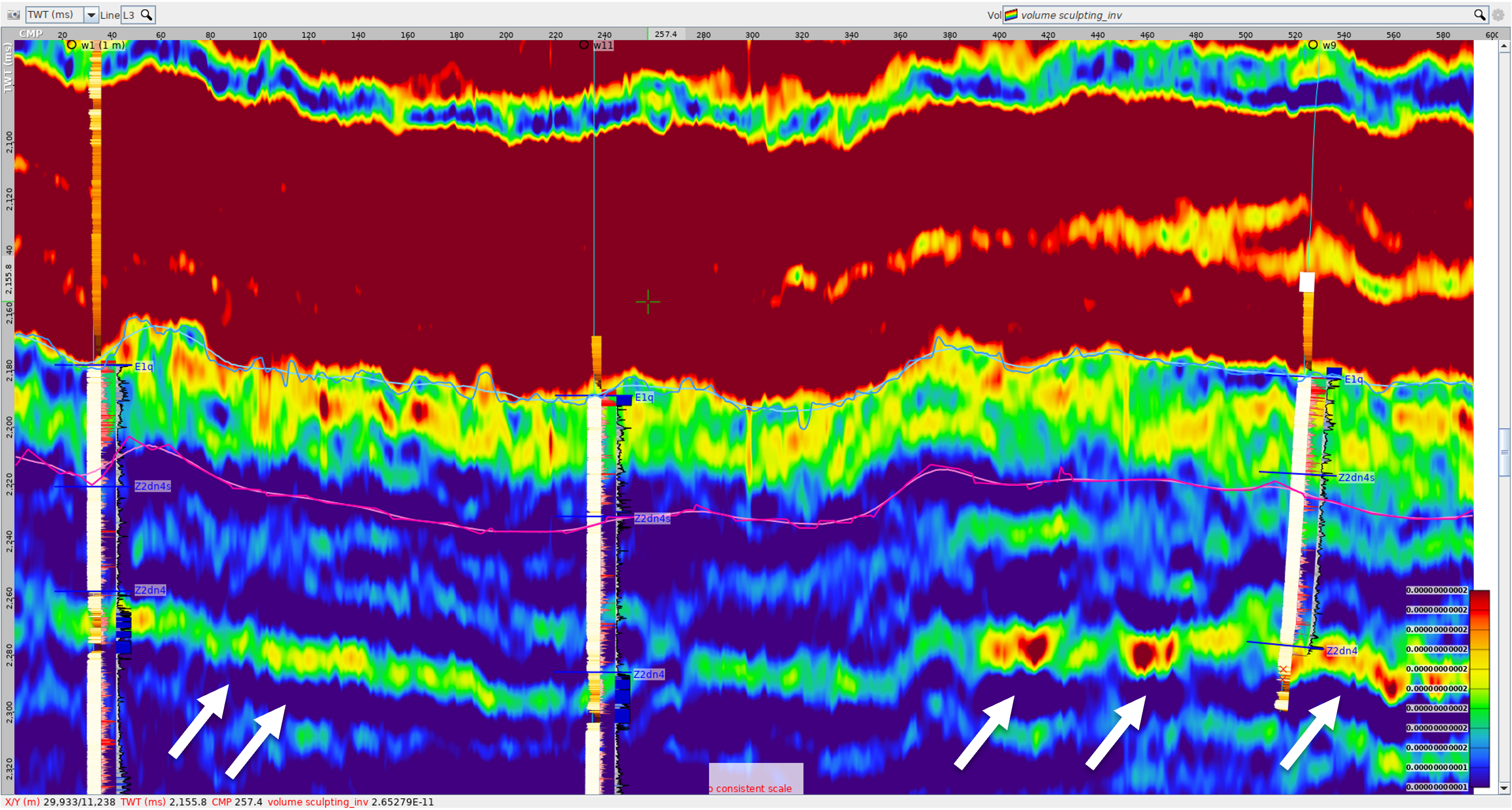BUSINESS CASE: RAPID RESERVOIR CHARACTERISATION
CUTTING TURNAROUND TIMES WITH WEB-AVO INVERSION TECHNOLOGY
Data preconditioning has traditionally been essential in linear workflows, aiming to align seismic gathers or angle stacks with our simplified data models. However, WEB-AVO inversion introduces a paradigm shift. This method provides a data model that aligns more closely with field data by comprehensively modeling all scattering and transmission effects occurring in the subsurface. The following example from the Central Sichuan Basin in onshore China underscores the advantages of this innovative approach.
In this case, WEB-AVO Inversion was deployed to characterize a reservoir situated at a depth of 5km. The primary challenge was the significant non-primary energy from the overburden, which obscured the reservoir’s weak primary signal. Traditional inversion methods, despite months of intensive data preconditioning to enhance the reservoir’s primary signal, failed to yield accurate pre-drill predictions.
Contrastingly, when WEB-AVO inversion was applied to both conditioned and unprocessed seismic data, it revealed that the preconditioning minimally impacted the removal of non-primary energy. This energy, previously seen as an obstacle, was effectively utilized by WEB-AVO. Moreover, preconditioning appeared to have distorted the primary energy’s amplitude and character, a conclusion drawn from the more geologically meaningful outcomes achieved with raw data.
The results of WEB-AVO inversion demonstrate that a thorough consideration of multiple scattering can significantly enhance seismic reservoir characterization in scenarios with intense scattering. Crucially, it also leads to substantial reductions in total turnaround times. By utilizing raw migrated data directly, this method circumvents the need for extensive and often ineffective seismic data conditioning. Such an approach not only saves time and costs but also markedly improves the accuracy and reliability of geological models.


Comparison of WEB-AVO inverted compressibility obtained from raw and pre-conditioned gathers as input. The similarity of the recovered reservoir units confirm the effectiveness of rapid reservoir characterisation by making time- and cost-intensive data pre-conditioning by far less critical.

Project facts:
- Location: Central Sichuan Basin, Onshore China
- Operator: PetroChina
- Phase: Production
- Target depth: 5000m
Keys to success:
- Acting on raw migrated data reduces the total turn-around time from seismic acquisition to rock properties
- Accounting for the full elastic wave-field in the overburden allows for accurate reservoir characterization
Resources:
- Conference Proceedings EAGE Annual Conference & Exhibition 2023: Discussing the Impact of Seismic Data Conditioning on Wave Equation Based (WEB-AVO) AVO Inversion
Authors:
J. Coffin1 and P. Doulgeris1
Affiliations:1 Delft Inversion

